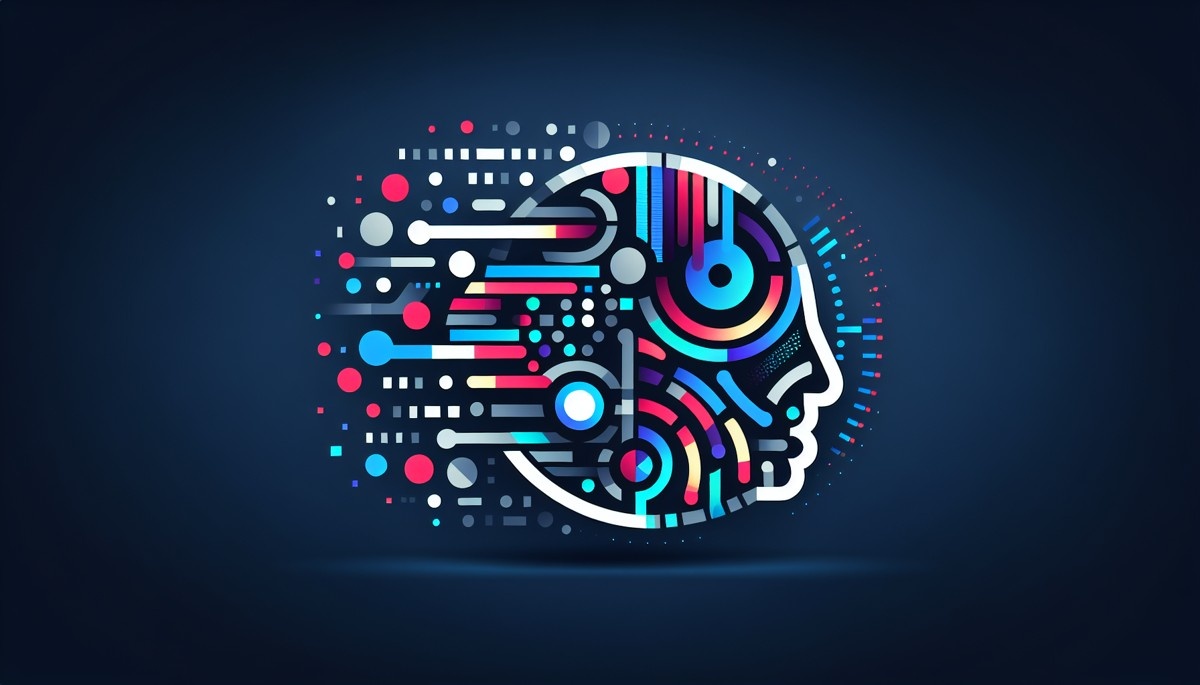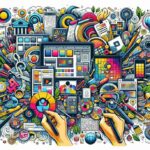How to Use AI in Logo Design

In today’s fast-paced and highly competitive market, staying innovative in logo design is more challenging than ever. Traditionally, logo design has been a deeply human-centric endeavor, demanding a keen eye for aesthetics, an understanding of branding nuances, and a flair for creativity. However, as we stand on the brink of a technological revolution, advancements in artificial intelligence (AI) are reshaping the landscape of this creative field.
As businesses and designers alike race to craft logos that are not only eye-catching but also memorable, the integration of AI into the design process promises to streamline and expedite this effort. With AI, there is the potential to transform traditional methods, making the process faster and more efficient without the compromise on quality. This new frontier in logo design introduces an array of possibilities that were once beyond reach.
AI in logo design brings to the table capabilities that humans may find challenging to replicate—analyzing vast amounts of data swiftly, identifying emerging design trends, understanding consumer preferences, and extracting color patterns with remarkable accuracy. This evolution encourages the creation of logos that are not only modern but also resonate deeply with audiences across varied demographics.
Yet, this transformation is accompanied by its own set of challenges. While AI offers to overcome conventional limitations, it also raises questions about the balance between creativity and control. Where does authentic human creativity end and machine efficiency begin? How can businesses and designers maintain a distinct brand identity in a sea of data-driven designs?
For those looking to harness the power of AI in their design processes, tools like the Fiverr Logo Maker offer a practical solution. This platform allows you to create a logo using artificial intelligence with just a few clicks, making it an invaluable asset for anyone looking to produce professional-grade logos efficiently.
In conclusion, as AI continues to evolve, its role in logo design is poised to become more pronounced. By embracing this technology and maintaining a delicate balance with traditional design techniques, businesses and designers can expect to craft logos that are not only visually captivating but also strategically aligned with their brand ethos. The future of logo design is here, and it’s being shaped by the harmonious blend of human creativity and AI intelligence.
Explaining AI’s Role in Logo Design
Embracing AI in logo design marks a transformative step in how designers approach the creative process. At the heart of this transformation are advanced technologies like machine learning algorithms and neural networks, which empower designers by providing deeper insights into current design trends, color preferences, and consumer behaviors.
Leveraging Technology for Enhanced Creativity
AI tools serve as an extension of a designer’s capabilities rather than a replacement. These tools excel at analyzing vast amounts of data in real-time. They can evaluate different styles, design elements, and market trends, offering designers a data-driven foundation upon which to base their creative decisions. This not only expedites the design process but also introduces designers to innovative solutions that might not become apparent through traditional methods.
Understanding Consumer Preferences
One of the significant advantages of integrating AI into logo design is its ability to rapidly interpret consumer preferences. AI algorithms can sift through large datasets to identify patterns in what appeals to target audiences. By understanding these trends, designers can tailor their logos to better resonate with consumers, leading to stronger brand recognition and loyalty.
Enhancing Design Decisions
AI tools enhance a designer’s decision-making process by offering a range of options grounded in extensive research and analysis. These tools can suggest cutting-edge design trends, optimal color combinations, and compelling visual dynamics that align with a brand’s ethos. The capability of AI to cross-reference historical design successes with current preferences allows designers to make informed decisions, boosting both creativity and relevance.
A Partnership, Not a Replacement
While AI enhances the logo design process, it is crucial to remember its purpose is to complement human creativity. The ultimate creative drive should stem from the designer’s vision and intuition. AI provides the data backdrop, but the task of weaving a narrative that captures a brand’s unique spirit lies with the human designer. In this harmonious partnership between human ingenuity and technological prowess, logo design ai emerges as a powerful tool to shape the future of branding.
Benefits of Using AI for Logo Design
In the modern realm of logo design, integrating artificial intelligence brings a multitude of benefits that center around efficiency, quality, and creativity. In an industry where time is of the essence, AI’s ability to automate repetitive tasks allows designers to shift their focus toward more intricate and creative aspects of a project, thereby enhancing the overall creative process.
Enhanced Efficiency
AI tools excel in reducing labor-intensive processes, drastically cutting down the time designers spend on menial tasks such as adjusting colors, resizing elements, or replicating design patterns. This liberation allows creative professionals to devote their energies to conceptualizing innovative solutions that resonate with a brand’s vision.
Moreover, by utilizing machine learning algorithms, AI can swiftly process vast datasets, providing actionable insights on current design trends and consumer preferences, enabling designers to make informed decisions faster than ever before.
Elevating Creativity
While there are concerns about AI stifling creativity, it can actually spark new ideas that might not naturally occur to human designers. AI’s analytical power can suggest novel design options by identifying hidden patterns and innovative concepts from extensive data, thus broadening the creative scope. This encourages experimentation with unique design elements that could distinguish a brand’s identity.
Rapid Prototyping and Feedback
An additional advantage of using AI in logo design is the capacity to quickly prototype and test various designs, making the feedback loop much shorter and more efficient. Designers can produce and evaluate multiple iterations of a logo in a fraction of the time it takes using traditional methods, leading to faster project turnaround times and more refined final products.
For entrepreneurs and startups seeking a streamlined solution, using AI-powered tools like the Fiverr Logo Maker provides a user-friendly experience. Designed to generate professional logos with just a few clicks, it allows users to harness AI’s capabilities to craft personalized logos fitting their brand. If you’re interested in exploring this efficient design path, you can try logo maker to experience the combination of AI efficiency and design customization firsthand.
AI is undeniably transforming the landscape of logo design by providing tools that enhance human creativity, foster innovation, and streamline processes, signifying a more dynamic future for branding solutions.
Challenges and Criticisms of AI in Logo Design
As the integration of AI in logo design grows, so do the concerns and challenges associated with its use. One major issue is the potential loss of creativity. While AI can analyze and generate designs quickly, its reliance on pre-existing data and algorithms risks producing homogenized designs. This could lead to logos lacking the unique touch and originality that a human designer might provide, potentially diluting a brand’s distinct identity.
Moreover, there is skepticism regarding AI’s ability to grasp the nuances of brand identity as profoundly as a human designer. Branding involves a deep understanding of a company’s values, culture, and target audience, which some argue is a depth of comprehension beyond current AI capabilities. This poses a challenge: can AI truly replace the nuanced personal touch of a creative professional?
Another concern is the reliance on algorithms. While AI can offer numerous suggestions and trends, designers may become too dependent on AI-generated data, risking a reduction in their creative problem-solving abilities. This dependence can lead to designs that are more formulaic than innovative.
Balancing AI assistance with personal design intuition is crucial in overcoming these challenges. While AI provides valuable insights and efficiency, it is vital that designers integrate their unique perspectives to achieve brand-specific outcomes. Such a balance ensures that the final product reflects both data-driven insights and the human touch, ultimately creating a logo that is both innovative and tailored to the client’s needs. As designers become more adept at harnessing AI tools, the partnership between human creativity and machine efficiency will likely set new standards in logo design AI.
Conclusion: The Future of Logo Design with AI
As the landscape of logo design continues to evolve, the integration of artificial intelligence is poised to revolutionize how designers approach the creative process. While the efficiency and innovative capabilities of AI offer remarkable advantages—including swift analysis, trend evaluation, and design optimization—it’s crucial to emphasize that AI should serve as a tool to enhance human creativity, rather than replace it.
AI’s role in logo design is not to usurp the creative spark that human designers bring to the table. Instead, its purpose is to provide a robust platform that supports designers with data-driven insights and novel ideas, thereby expanding the horizons of what’s possible in branding. By augmenting human capabilities, AI empowers designers to focus on the intricate and personal aspects of logo creation, such as capturing a brand’s unique identity.
The partnership between humans and AI in the design process is set to yield benefits that are both innovative and efficient. As technology relentlessly advances, designers will find more sophisticated ways to collaborate with AI, paving the way for more customized and dynamic logo design solutions. This harmonious collaboration heralds the future of branding, where AI augments the designer’s journey, leading to more personalized and effective branding solutions.
For those seeking to leverage the power of AI in logo design without a steep learning curve, tools like the Fiverr Logo Maker present an accessible solution. Try logo maker to effortlessly create custom logos; the platform uses advanced AI algorithms, making the design process both easy and efficient. In mere clicks, users can harness this powerful tool to craft logos that echo their brand essence, demonstrating the potential of AI to democratize design while still requiring thoughtful human input.





